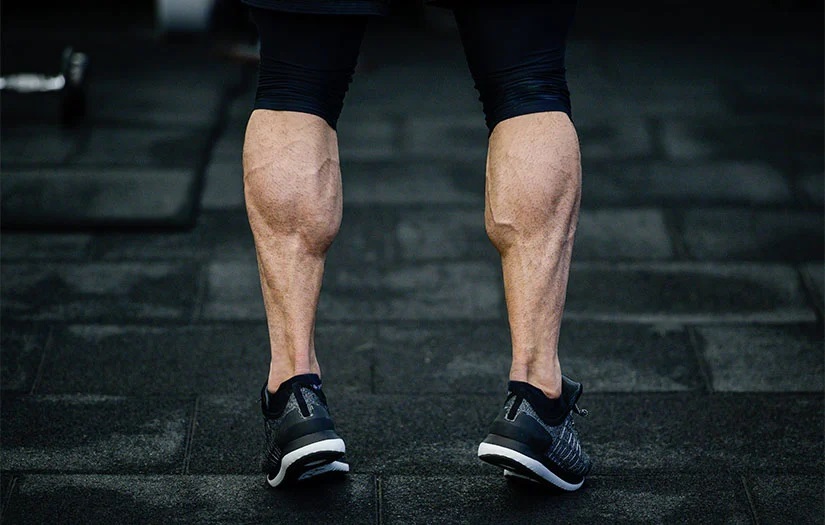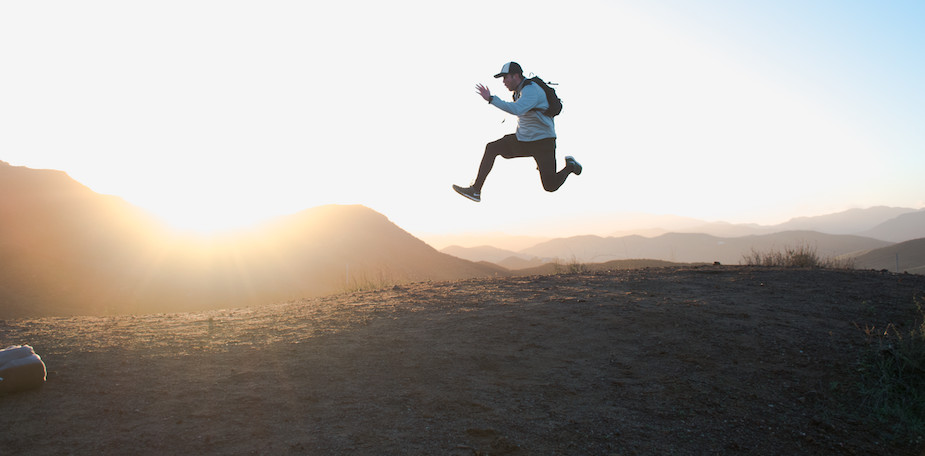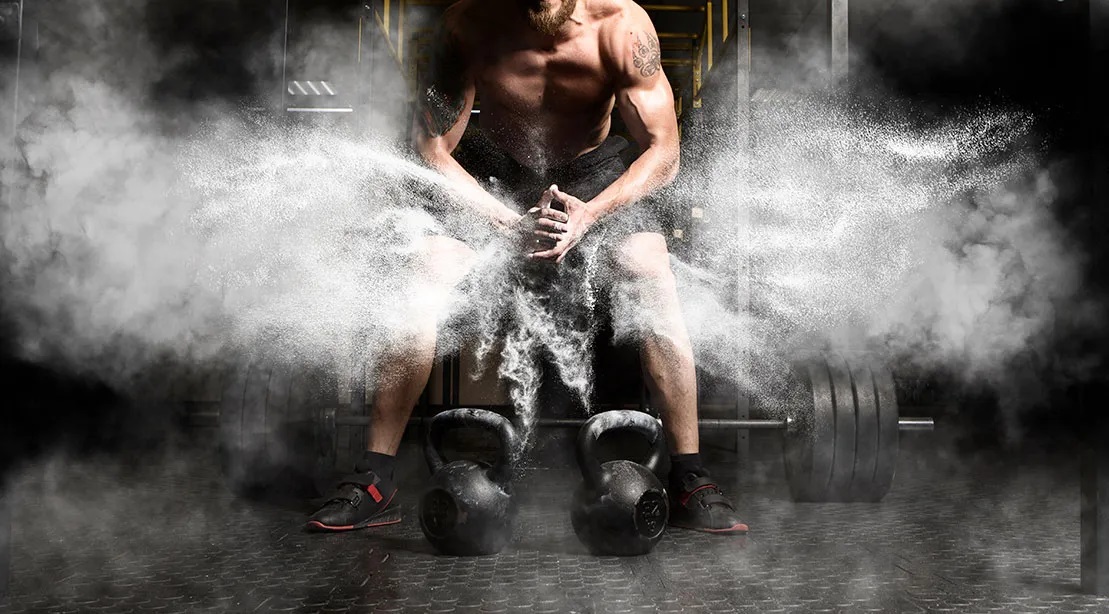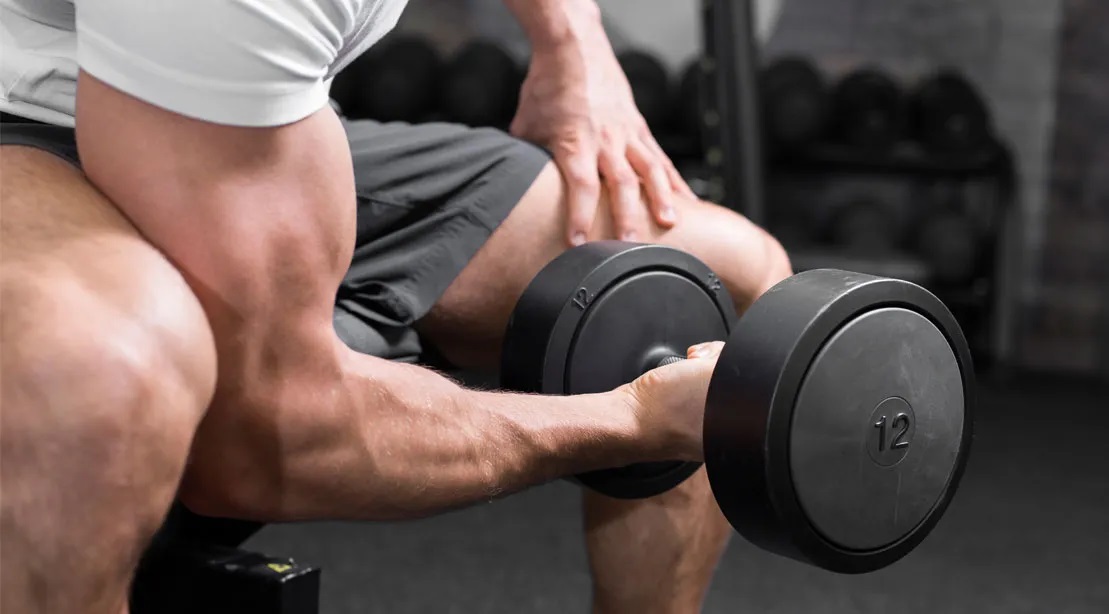Anyone who has ever tried to get more muscle definition in their calves knows that it can sometimes be a tough task. Training your calves for muscle growth takes intentional effort, time, and a solid plan. To grow your calves, you want to choose the right exercises and perform the right number of reps and sets to see results. This article will show you how.
Jumping Right In – The Best Exercises for Growing Your Calves
Strength exercises:
Exercise #1 Standing Calf Raise
• Stand on the floor or with the balls of your feet on a raised surface for more range of motion. The feet should be hip width apart with the toes facing straight ahead.
• Raise the heels until you’re standing up on your toes. Squeeze the calves at the top of the movement and hold for 1-2 seconds before slowly lowering down.
• If you’re on a step, lower your heels below the surface of the step for a larger range of motion.
• Increase the intensity: Add weight by holding a dumbbell, or kettlebell, wearing a weighted vest, etc. Increase the weight by 5-10% weekly (starting by adding 5-10% of your body weight for the initial weight that you hold/wear).
Exercise #2 Leg Press Calf Raise
• Sit in the leg press machine with feet hip-width apart and facing straight ahead on the platform. Hang your heels off the bottom edge so that only the balls of your feet are on the platform.
• With the platform pressed out, lower the platform toward your body without bending your knees (your toes will come back toward your shins). Go as far as your ankles will let you go.
• Press through the balls of your feet to press the platform away from you.
• Repeat maintaining good form and posture.
Exercise #3 Single Leg Calf Raise
• Stand on one leg on the floor or with the ball of your foot on a raised surface for more range of motion. Toes should be facing straight ahead.
• Raise the heel until you’re standing up on your toes. Squeeze the calves at the top of the movement and hold for 1-2 seconds before slowly lowering down.
• If you’re on a step, lower your heel below the surface of the step for a larger range of motion.
• Increase the intensity: Add weight by holding a dumbbell, or kettlebell, wearing a weighted vest, etc. Increase the weight by 5-10% weekly (starting by adding 5-10% of your body weight for the initial weight that you hold/wear).
Exercise #4 Seated Calf Raise
• Sit on a bench (or using a seated calf raise machine) with good posture and knees bent at 90 degrees. The feet should be hip width apart with the toes facing straight ahead.
• Raise the heels until you’re up on your toes. Squeeze the calves at the top of the movement and hold for 1-2 seconds before slowly lowering down.
• If you’re on a machine that allows for it, or you’ve placed your toes on a raised surface like a stack of plates, lower your heels below the surface of the step for a larger range of motion.
• Increase the intensity: Add weight by holding a weight in your lap or adding weight to the machine. Increase the weight by 5-10% weekly (starting by adding 5-10% of your body weight for the initial weight that you add).
Plyometric exercises: Plyometric exercises, like lunge jumps and jump rope, can also improve calf strength and muscle definition.
Exercise #5 Lunge Jumps
• Start in a lunge position, with the arms drawn back.
• Rapidly explode upward, pointing the toes as you lift off of the ground.
• Switch legs in the air and land as quietly as possible, keeping the feet, knees, and hips pointed straight ahead.
Exercise #6 Jump Rope
Use small, controlled jumps, and keep the knees slightly bent. Stay on the balls of your feet as you jump rope. Start with 10-30-second intervals for 3 sets and build from there. You can even try jumping on one foot at a time as you become more advanced.
Why Are Calves So Hard to Grow?
The most common complaint about training this muscle group is that it seems impossible to see results. The calves aren’t different from other muscles in their ability to grow, but because we use them every day by walking, they are strong! Here are some possible reasons you’re not seeing the results that you want:
Using a training volume that’s too low. If you’re just doing a couple of sets per week, it won’t be enough to promote muscle growth. For hypertrophy, you’ll want to do 6-12 reps or more (depending on the load) for 4-5 sets, at least twice per week.
Not using a full range of motion. At the ankle, your foot can dorsiflex (lift) up to 20 degrees, and plantarflex (pointing the toe) up to 50 degrees. Moving your ankle through the full range of motion will maximize the usage of the calf muscles. If you’ve only tried calf raises from the floor, you might see a benefit by trying off a step so you can utilize this full range of motion.
Using the same exercises and the same reps and sets. Our bodies are adaptation machines! Eventually, your calves will get used to your routine and will need an adjustment in the load, reps, and/or sets to keep results progressing.
Workout Frequency for Killer Calves
To see muscle growth, it’s recommended that you train your calves at least twice per week (Schoenfeld, et. al. 2016). Choose 2-3 calf exercises per session for best results. The acute variables for muscular hypertrophy are as follows: 6-12+ reps, for 4-5 sets.
For the calves, you may see better results using a higher rep range to increase time under tension and maximize your ability to use the full range of motion versus loading hefty weight for fewer reps.
Calf Anatomy Explained
The gastrocnemius and soleus are not the only muscles in the calf complex, but they are the two prominent players when we look at building calf muscles.
Gastrocnemius: The gastrocnemius is the bulkier portion that is most noticeable when looking at the calves. The medial head originates on the medial condyle of the femur (the inside of the back part of the thigh bone) and the lateral head originates on the lateral condyle of the femur (the outside of the back part of the thigh bone). It inserts at the posterior calcaneus (back of the heel) via the Achilles tendon. The gastrocnemius helps with plantar flexion and knee flexion.
Soleus: The soleus is a flat, long muscle that originates from the posterior-superior tibia and fibula (bones in the lower leg), and it merges with the gastrocnemius to insert at the posterior calcaneus (back of the heel) via the Achilles tendon. The soleus is also responsible for plantar flexion and for stabilizing the foot/ankle complex.
Will Stronger Calves Make You a Better Athlete?
Yes! When you consider athletic movements, you might think of the following: running, jumping, cutting, etc. Each of these movements requires the ability to push off the feet to propel in a specific direction, which requires the use of the calves.
The stronger your calves are, the more power you will be able to exert in these movements. Having strong calves will not only protect the foot/ankle complex during these movements, but it can also improve the ability of the athlete to perform these movements well. Keep in mind that if your goal is to have explosive power for athletics, you will need to incorporate power training, not just hypertrophy training-which is simply aimed at muscle growth.
Can You Grow Calves with Just Bodyweight Exercises?
Training bodyweight only is a great place to start, especially by adding the full range of motion in your calf exercises. This alone may spark some results, but you will need to continue to adjust the acute variables (reps/sets/weight) to see continued results.



